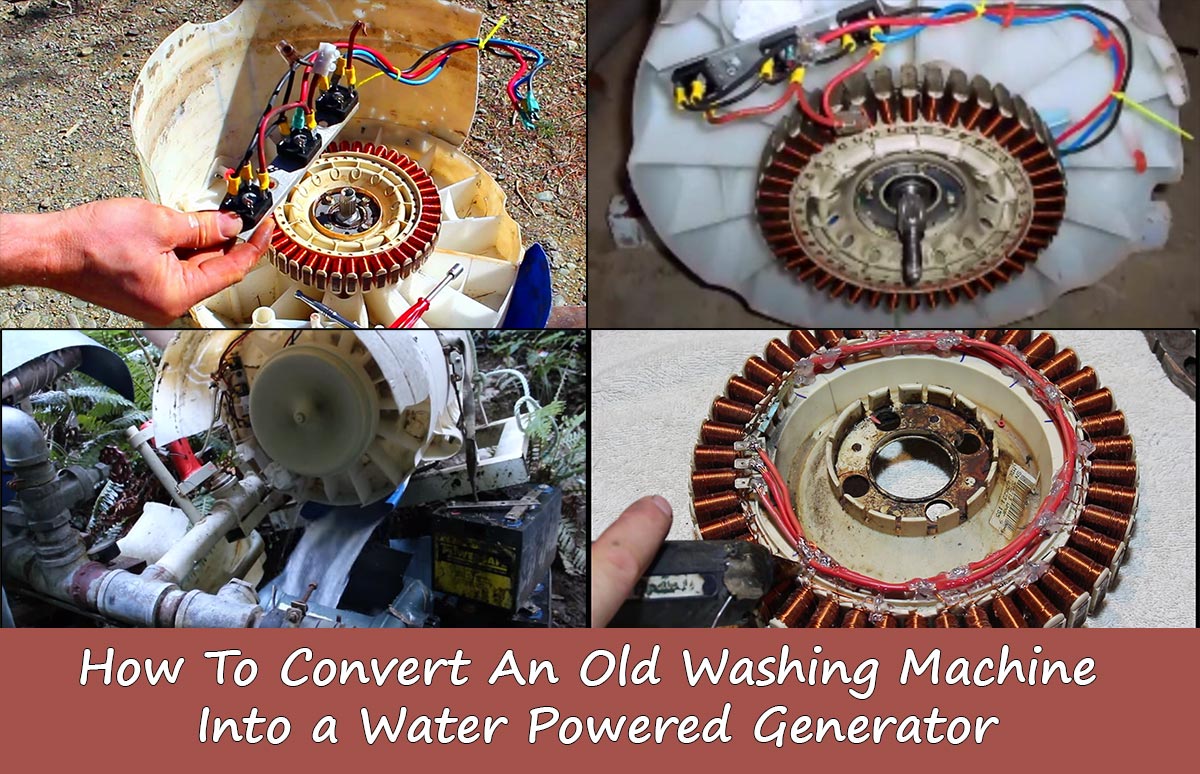How To Convert An Old Washing Machine Into a Water Powered Generator
How to Convert an Old Washing Machine Into a Water Powered Generator
Are you ready to turn an old, unused washing machine into a practical and eco-friendly energy source? With just a few modifications, you can transform a washing machine motor into a water-powered generator. This generator can harness the power of running water from a stream, river, or a constructed water source, generating electricity for off-grid living or emergency power.
What You’ll Need:
- An old washing machine (top-load models work best).
- A reliable water source (stream or river with consistent flow).
- Basic tools: wrench, screwdriver, wire cutters, multimeter.
- PVC piping for water channeling.
- Belts and pulleys to control rotation speed.
- Alternator and inverter (optional) for efficient energy use.
Step-by-Step Guide
- Prepare the Washing Machine Motor: Start by carefully disassembling the washing machine. You’ll want to remove the motor from the washing drum. This motor will serve as the heart of your generator, using the flow of water to spin its rotor.
- Install the Drive Pulley System: Once you’ve removed the motor, attach a large pulley to the motor shaft. This pulley helps convert slow water flow into enough mechanical energy to rotate the motor shaft effectively. By increasing the diameter of the pulley, you can increase the efficiency of energy conversion.
- Channel the Water Flow: Use PVC pipes or a custom-built flume to direct water flow towards the drive pulley system. This water pressure will drive the pulley, creating rotation in the washing machine motor. Ensure that the water has a steady flow and can consistently hit the drive pulley to maintain power generation.
- Connect Electrical Components: As the water turns the motor, it generates alternating current (AC). To convert this into usable electricity, you’ll need to connect the motor to an inverter. For a more efficient setup, use an alternator to control the energy output.
- Testing and Adjustments: Use a multimeter to check the voltage output of your water-powered generator. You may need to make adjustments to the pulley size, water flow, or alternator connections to optimize energy production.
Benefits of a Water Powered Generator
- Sustainable Energy: Using natural water flow reduces dependency on fossil fuels and electricity grids.
- Cost-Effective: Repurposing old appliances minimizes costs while creating a renewable energy source.
- Off-Grid Solution: Perfect for remote locations, cabins, or emergency backup power.
For more detailed visuals and specific pulley and motor setups, watch the full video here.
WARNING: This video is intended for information purposes only, working with electricity can be dangerous, If you are not qualified, please consult an electrician before attempting any wiring shown in this video.
 Home and Gardening Ideas At home and Gardening ideas we believe inspiring readers about homesteading, self sufficiency
Home and Gardening Ideas At home and Gardening ideas we believe inspiring readers about homesteading, self sufficiency






